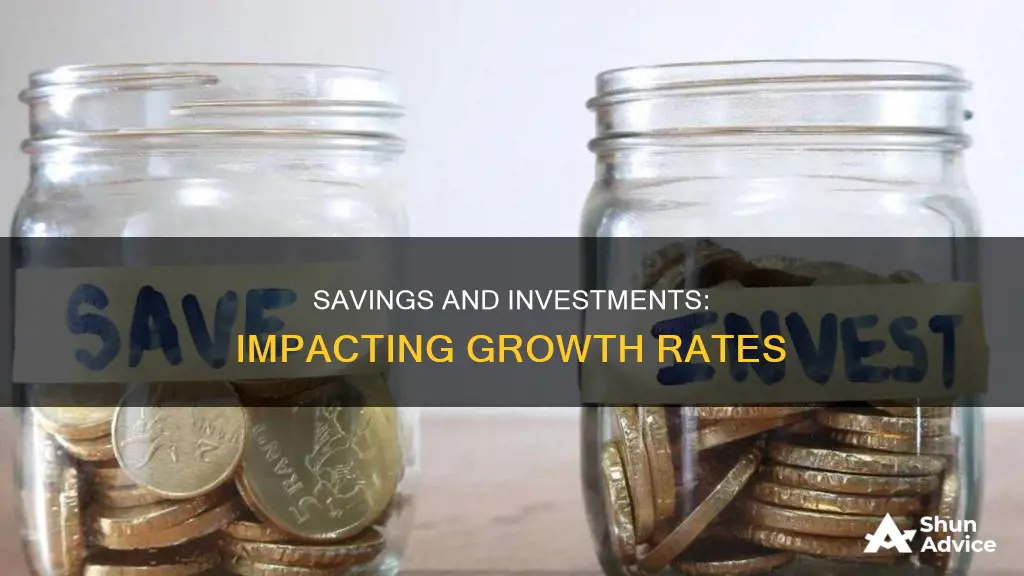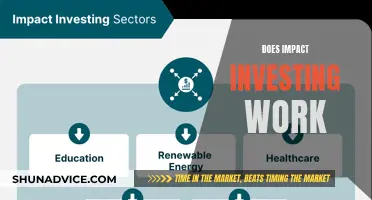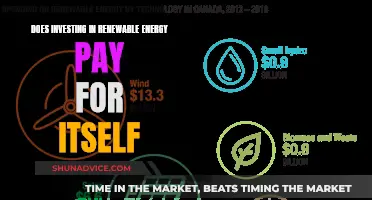
The impact of savings and investments on economic growth has been a subject of research for many economists. In general, when interest rates are high, people tend to spend less and save more, as the cost of borrowing money increases. Conversely, when interest rates are low, people spend more and save less. This relationship between interest rates, savings, and investments can have significant effects on economic growth rates.
For example, in the case of Kosovo, a developing country with the highest economic growth in Southeast Europe, an increase in savings has positively impacted its economic growth. Higher savings rates have stimulated investment, production, and employment, leading to greater sustainable economic growth. Additionally, countries with higher savings rates are less dependent on volatile foreign direct investment, reducing their risk exposure.
However, there is also a paradox when it comes to savings. While savings are generally considered good and virtuous, if everyone saves simultaneously, it can lead to a decrease in aggregate demand and cause a recession. This phenomenon is known as the Paradox of Thrift, first described by Keynes.
Therefore, while savings and investments can positively impact economic growth rates, it is essential to consider the short-term and long-term effects on consumer spending, investment, and overall economic activity.
| Characteristics | Values |
|---|---|
| High savings rates | Can lead to less consumption and more investment, resulting in higher economic growth |
| Low savings rates | Can lead to deficits in the budget and balance of a country's account |
| High interest rates | Can cause an increase in savings as the return on high-interest savings accounts is more appealing |
| Low interest rates | Can encourage spending and investment |
| High inflation | Can reduce the value of savings |
What You'll Learn

The impact of savings on economic growth
Positive Effects of Savings on Economic Growth
Firstly, savings can stimulate investment, production, and employment, leading to greater sustainable economic growth. This is particularly true for developing countries, where the largest source of financial capital comes from savings deposited in commercial banks. Savings can also help finance higher levels of investment and boost productivity over the long term. In the Harrod-Domar model of economic growth, the level of savings is seen as a key factor in determining economic growth rates.
Additionally, countries with higher rates of savings tend to experience faster economic growth than those with lower saving rates. This is because capital accumulation creates greater opportunities for production and productivity by providing additional income streams.
Negative Effects of Savings on Economic Growth
However, there is also a paradoxical relationship between savings and economic growth. In the short term, a rapid rise in savings can cause a fall in consumer spending, which can lead to a recession. This is because consumer spending accounts for a significant portion of a country's GDP. For example, the increase in savings and the corresponding fall in consumer spending were significant factors in the 2008/2009 recession.
Furthermore, during times of economic stagnation or recession, banks may be reluctant to lend to firms due to a pessimistic economic outlook, even if they have increased deposits from higher savings rates. This can result in a sharp fall in investment, hindering economic growth.
The Role of Interest Rates
In summary, while savings can have both positive and negative effects on economic growth, it is generally beneficial to maintain a solid savings rate at both the personal and national levels. This can help cushion economic downturns and reduce the need for government stimulus packages, which can burden future generations with debt.
Student Loans vs. Investing: Navigating the Debt-Investment Dilemma
You may want to see also

The role of interest rates
Interest rates play a crucial role in shaping an economy's growth trajectory, influencing both savings and investment decisions. Here is an overview of the role of interest rates:
The Interest Rate Mechanism
The interest rate is the cost of borrowing money, expressed as a percentage of the principal amount. It serves as a type of compensation for the lender, who forgoes the opportunity to spend or invest that money elsewhere. Interest rates can apply to various financial transactions, including loans, mortgages, credit card debt, and business capital projects.
Impact on Savings and Spending
Higher interest rates generally incentivize individuals to save more. When interest rates are high, the cost of borrowing money increases, making it more expensive to purchase goods and services. As a result, people tend to spend less and save more to cover future expenses. On the other hand, lower interest rates make borrowing more affordable, encouraging consumers to spend more, which can stimulate the economy.
Investment and Business Decisions
Interest rates also play a pivotal role in investment and business decisions. When interest rates are low, businesses may be more inclined to take out loans to fund capital projects, expand their operations, or invest in new technologies. Lower interest rates can make it easier for entrepreneurs to access the funds needed to start or grow their businesses.
Time Value of Money
Interest rates are closely linked to the concept of the time value of money. Money today is generally worth more than the same amount of money in the future due to its earning potential. Interest rates help quantify this value by determining how much money will grow or how much borrowing will cost over time.
Central Bank Monetary Policy
Central banks, such as the Federal Reserve, use interest rates as a tool to influence monetary policy and achieve specific economic objectives, typically price stability and controlled inflation. By raising or lowering interest rates, central banks can impact borrowing costs, consumer spending, and investment decisions, ultimately influencing the overall pace of economic growth.
Risk and Return
Interest rates are also a measure of risk and return. Lenders assess the risk associated with a particular loan and set interest rates accordingly. Loans considered high risk will typically have higher interest rates to compensate for the potential losses in case of default.
Global Capital Flows
Interest rates influence global capital flows and exchange rates. When a country's interest rates are relatively high, it can attract foreign investment as investors seek higher returns. However, if interest rates are too high, it can also lead to capital outflows as investors seek more favourable opportunities elsewhere.
In summary, interest rates are a critical component of any economy, influencing the decisions of consumers, businesses, investors, and central banks. They play a pivotal role in shaping savings behaviour, investment choices, and the overall economic growth trajectory of a country.
United Airlines: Invest Now?
You may want to see also

The effect of investment on growth
The relationship between savings, investment, and economic growth is a complex one, with various factors influencing the outcome. At its simplest, we can say that savings are a prerequisite for investment, and investment is a key driver of economic growth.
In economic theory, the level of savings is said to equal the level of investment. Savings provide the funds that banks can lend to businesses for investment in projects, equipment, and people. This investment then has a positive impact on production, employment, and economic growth.
The Harrod-Domar model of economic growth suggests that the level of savings is a key factor in determining economic growth rates. This is supported by real-world evidence, such as the case of Kosovo, which has experienced significant economic growth in recent years, partly due to an increase in savings and the resulting boost to investment.
However, it is important to note that the relationship between savings and investment is not always linear. While higher savings can facilitate more investment, a rapid rise in savings over a short period can cause a fall in consumer spending, which may lead to a recession. This paradox, known as the Paradox of Thrift, highlights that while savings are generally beneficial, a sudden increase across the board can reduce aggregate demand and cause an economic downturn.
Additionally, during a recession, banks may become reluctant to lend and invest, even if they have increased deposits. This was observed during the 2008/2009 recession, where an increase in savings was met with a sharp fall in investment, as banks became cautious due to the pessimistic economic outlook.
Interest rates also play a crucial role in the relationship between investment and growth. When the Federal Reserve adjusts interest rates, it can impact businesses' willingness to borrow and invest in projects. Lower interest rates make borrowing cheaper, encouraging businesses to invest, while higher interest rates may lead to reduced investment due to higher lending costs.
In summary, investment is a key driver of economic growth, and savings provide the necessary funds for this investment. However, the relationship is complex, and various factors, such as consumer spending, bank lending practices, and interest rates, can influence the outcome. A careful balance is required to ensure that savings translate into investment and contribute to economic growth rather than causing a recession.
Investments: Where People Put Their Money Now
You may want to see also

The impact of inflation
Inflation is a rise in the average cost of goods and services over time, reducing the purchasing power of money. Inflation is typically driven by supply and demand; when demand rises or supply falls, prices tend to increase. Inflation can eat away at your investments and savings, and it's important to understand its impact to make informed financial decisions.
The normal range of inflation in the US is 2-3%, but in 2022, the cost of living rose by 6.2%. This means that overall prices increased by 6.2% for the year. For example, a car that cost $40,000 in 2022 would cost around $44,480 in 2023.
Inflation can reduce the value of your savings, especially if you have a fixed payout that may not keep up with rising prices. For example, if you have $10,000 in savings today, that money will not buy as much in 20 years' time. While you haven't lost money, your net worth decreases as inflation erodes your purchasing power.
Inflation can also have a mixed impact on stocks. Inflation is usually high when the economy is strong, so companies may be selling more, which could help their share price. However, companies will also pay more for wages and raw materials, which hurts their value. Whether inflation helps or hurts a stock depends on the performance of the company.
On the other hand, investments in certain commodities, such as oil, agricultural goods, and precious metals, tend to perform well when inflation is high. As the value of the dollar decreases, it costs more dollars to buy the same amount of product, helping to maintain purchasing power.
Planning for Inflation
Inflation is one reason why people don't put all their money in the bank, as it can erode the value of those savings over time. Some people prefer to keep some of their money in potentially higher-growth investments, such as stocks or mutual funds, as these investments tend to earn more per year than the inflation rate.
You may also want to consider inflation risk when deciding on your asset allocation. Fixed investments, like bonds or fixed annuities, can be adversely affected by inflation. To diversify, some investors choose to add gold or inflation-indexed investments, such as Treasury Inflation-Protected Securities (TIPS), to their portfolios.
Safeguarding Your Savings and Income
The primary way to beat inflation is to invest your savings for a better return than you can get in money market or savings accounts. Investing in anything other than an FDIC-insured account inevitably involves more risk, but you can choose investments that match your risk tolerance.
For example, retired people might want to consider Treasury Inflation-Protected Securities (TIPS). These securities adjust the interest payouts you receive based on changes in the Consumer Price Index (CPI). The principal payment you get back will also be adjusted for inflation. Even if prices go down over the investment period, you will still get back the original principal if you purchased the security when it was first issued.
Returns on stock investments also tend to beat inflation. Investors who want to avoid the volatility associated with individual stocks might opt for mutual funds or exchange-traded funds (ETFs), which usually have lower fees than other index funds.
Investing a portion of your savings in precious metals, such as gold or silver, is another way to outrun inflation. An asset allocation that adds a little bit of gold to a stock portfolio can also produce more consistent returns.
Safeguarding Your Income
If you are a retired American who receives Social Security payments, you may see an increase in your monthly check as the government adjusts these payments based on the cost of living (COLA), as measured by the CPI. For example, the COLA for 2023 is 8.7%, which is the largest increase since 1981.
Protecting Your Savings from Inflation
It is possible to protect your savings from inflation by investing in Treasury Inflation-Protected Securities (TIPS), government I bonds, stocks, and precious metals.
Investing 101: Post-College Edition
You may want to see also

The influence of government policy
Government policy can have a significant influence on investment and savings rates and, consequently, on economic growth. Fiscal and monetary policies are the primary tools used by governments to impact their country's economy.
Fiscal policy involves the use of government spending and taxation to shape the economy. During economic downturns, governments may employ expansionary fiscal policies by increasing spending or cutting taxes to stimulate the economy. Conversely, in times of rising inflation, they may adopt contractionary policies by reducing spending or raising taxes. Fiscal policy can also be used to promote sustainable growth and reduce poverty, with a particular focus on infrastructure and education.
Monetary policy, on the other hand, is managed by central banks, such as the US Federal Reserve, to regulate the money supply and achieve long-term economic growth. Central banks employ contractionary measures during periods of high inflation and expansionary policies during recessions. Interest rates are a key tool in monetary policy, as they influence borrowing costs for consumers and businesses, thereby impacting spending and investment decisions. Lower interest rates tend to encourage spending and investment, while higher interest rates make borrowing more expensive, leading to reduced economic activity.
Additionally, governments can influence markets through their ability to issue currency and manipulate its value. Inflationary policies can provide a short-term economic boost as companies charge more for their products. However, this can lead to an erosion of value over time, negatively impacting savers and bond buyers while benefiting debtors.
Subsidies and tariffs are also tools used by governments to influence specific industries. Subsidies involve taxing the public and providing revenue to a chosen industry, while tariffs involve taxing foreign products to make domestic products more competitive. While these actions can benefit certain sectors, they can also lead to indirect resource drains for other industries.
Furthermore, regulations and corporate taxes can significantly impact business operations and profitability. Increasing safety regulations, for example, may raise costs for companies, potentially squeezing out smaller providers. High corporate taxes may deter companies from entering certain markets, with low-tax states and countries attracting more businesses.
In summary, government policies, including fiscal and monetary measures, have a substantial impact on investment and savings rates. By manipulating interest rates, government spending, taxation, and the money supply, governments can influence economic growth, either positively or negatively, depending on the specific policies implemented.
Vacation Rental Investment: Unlocking the Secrets to Success
You may want to see also
Frequently asked questions
Investment savings can have a significant impact on growth rates. When people save more money, banks can lend more to firms for investment, which stimulates investment, production, and employment, generating greater sustainable economic growth.
Interest rates and investments have an inverse relationship. When interest rates rise, investment in bonds falls, and when interest rates are cut, investment in bonds increases.
Interest rate changes do not directly affect the stock market. However, they can have trickle-down effects that impact stock prices. For example, when interest rates rise, banks increase their rates for consumer and business loans, which may cause companies to halt expansions and hires, reducing the value of their stock.
Savings can help the economy by providing a source of investment funding, boosting productivity over the long term. However, a rapid rise in savings can cause a fall in consumer spending, which may lead to a recession.
The paradox of savings is that people save more when they think it's a bad time to save and save less when it's a good time to save. This is because people tend to save more when they are pessimistic about the economy, and this increase in saving can lead to a drop in aggregate demand and a recession.







